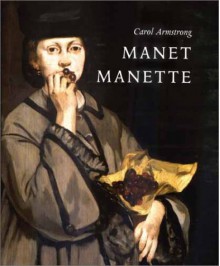Manet, a founding father of modernism, is one of the towering figures of 19th-century art. In this volume, Carol Armstrong looks closely at Manet's works to uncover a view not only of the artist but also of modernity itself. As she places his art within frameworks of colour, the feminine Other...
show more
Manet, a founding father of modernism, is one of the towering figures of 19th-century art. In this volume, Carol Armstrong looks closely at Manet's works to uncover a view not only of the artist but also of modernity itself. As she places his art within frameworks of colour, the feminine Other (the "Manette" in "Manet"), and consumerism, Armstrong seeks to expand and revise our understanding of this artist as a painter of modern life. Surveying most of Manet's diverse output, the text addresses along the way his methods of self-presentation, his exhibition strategies, the relation of his etchings and paintings, the significance of his relationships with the model Victorine Meurent and the painter Berthe Morisot, the painterly construction of identity and gender difference, and much more. At the same time, it considers contemporary writings by Baudelaire, Zola, the Goncourts, and others who dealt with issues relating to artistic identity and modernity, painting, the model, and femininity. Armstrong concludes that Manet's work demonstrates consistent preoccupations with defining and contradicting his own signature style of painting and with the gendering of costume, colour, and the making of his art. These preoccupations, she shows, suggest a new understanding of Manet's oeuvre.
show less

